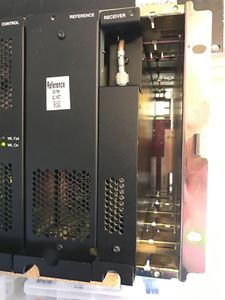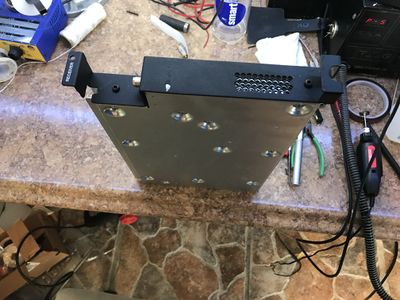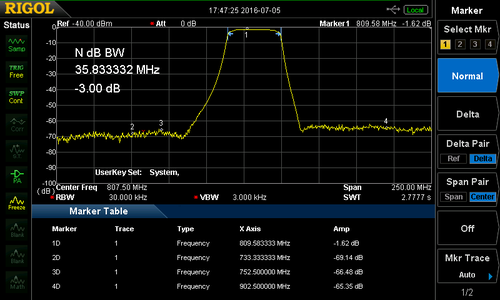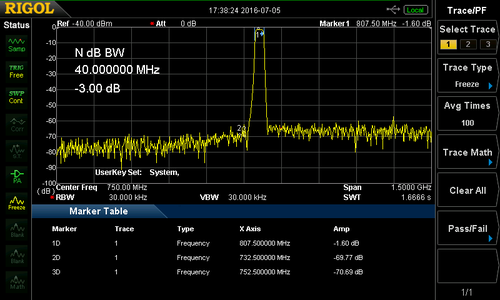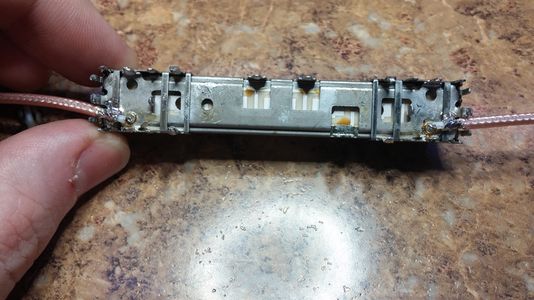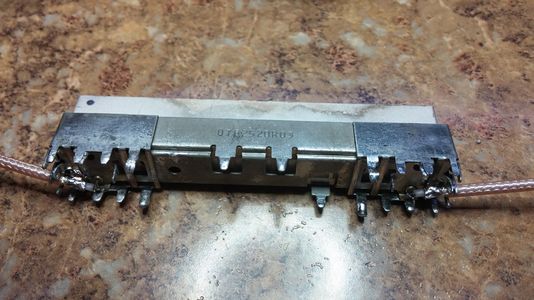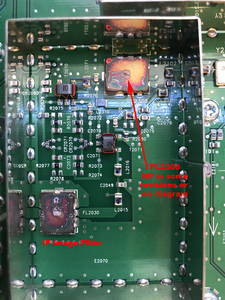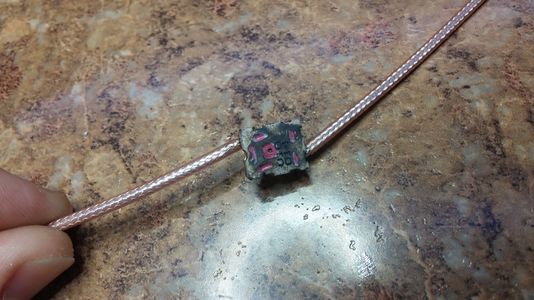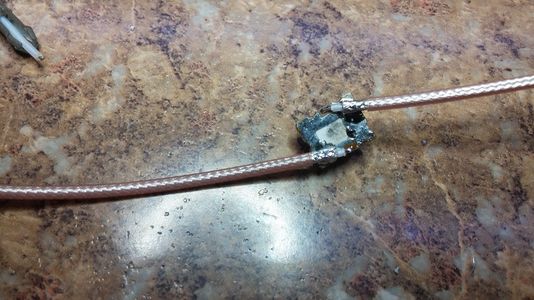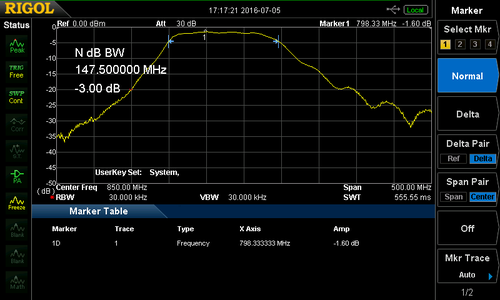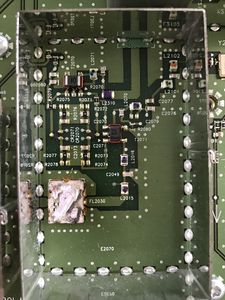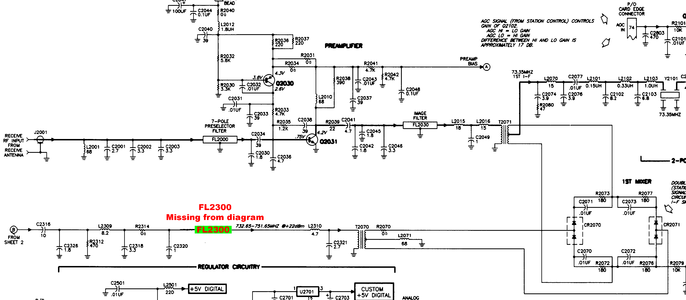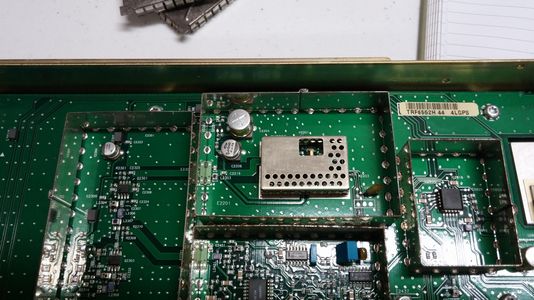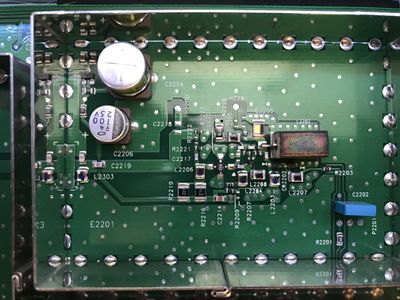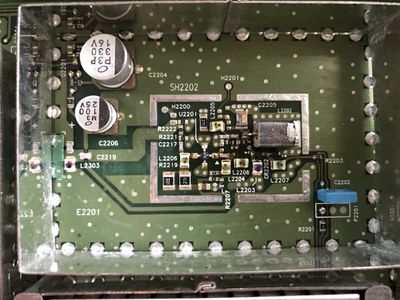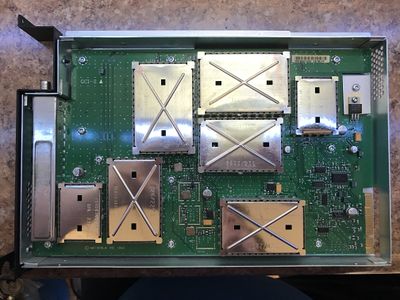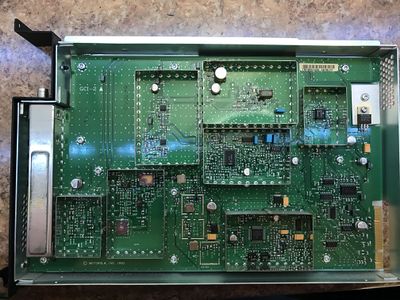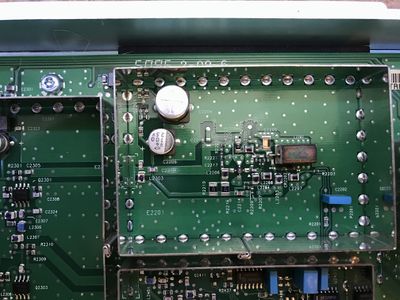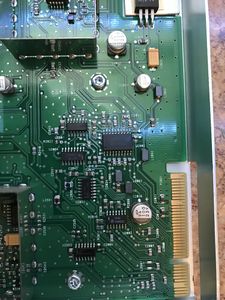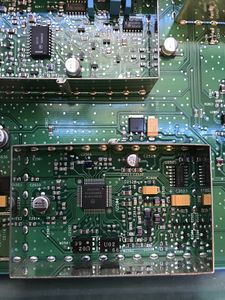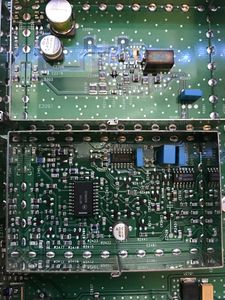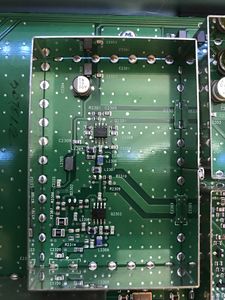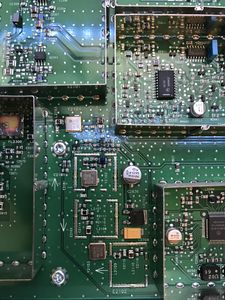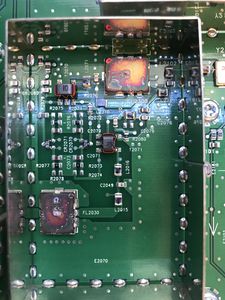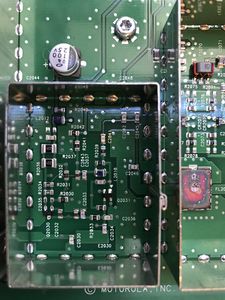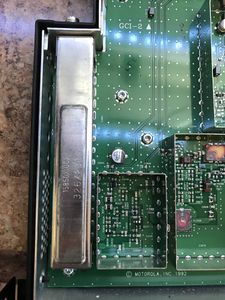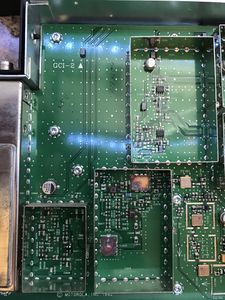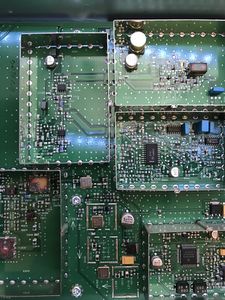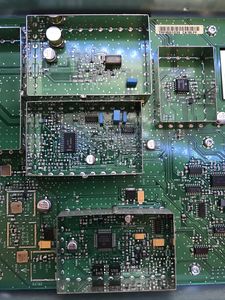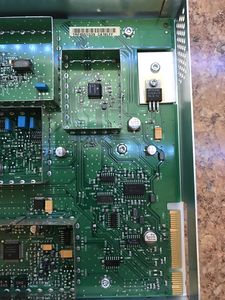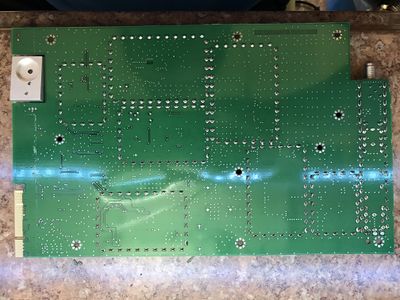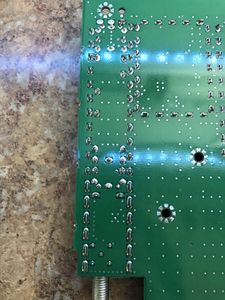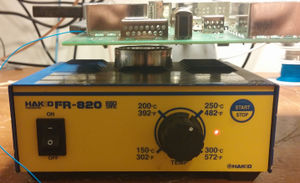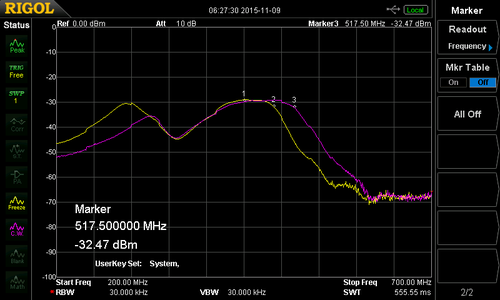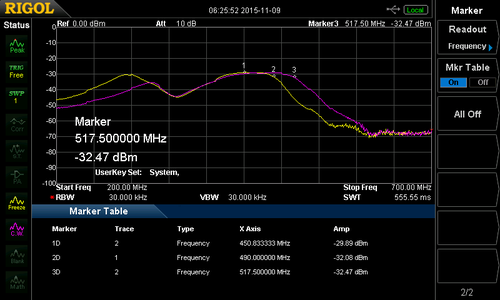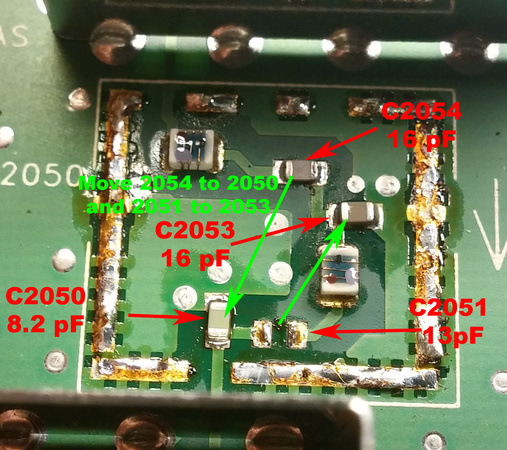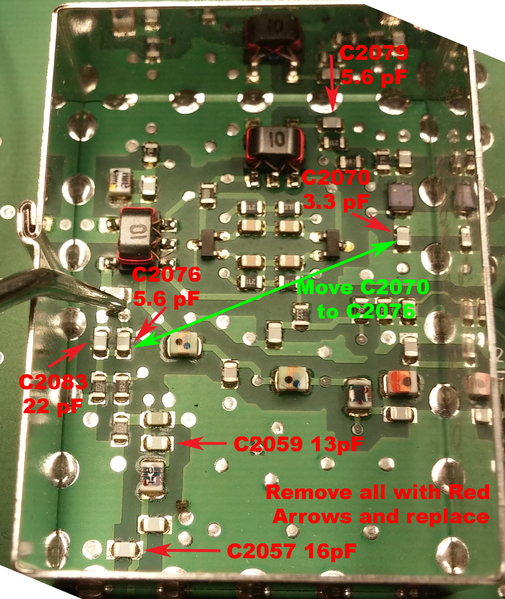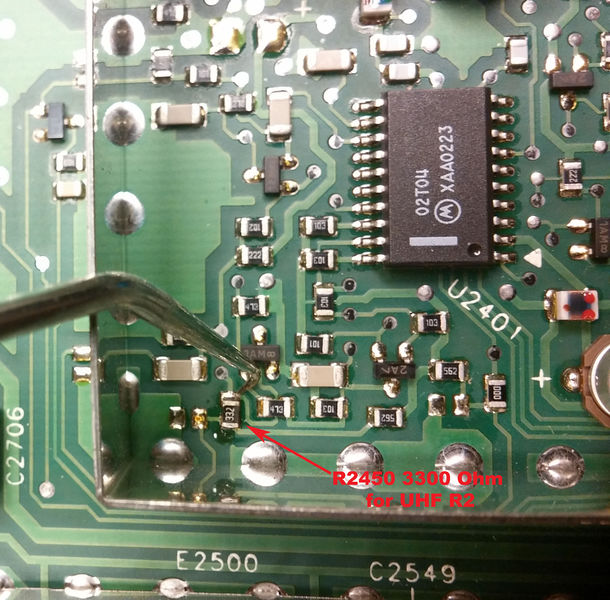Difference between revisions of "800 MHz Receiver"
| Line 161: | Line 161: | ||
CHANGE PARTS PER TABLE | CHANGE PARTS PER TABLE | ||
| − | === Tuning VCO === | + | ==== Tuning VCO ==== |
Tuning is needed to ensure we cover the proper ranges with the VCO. If we can't align the station due to the VCO not being locked in the commercial band, being locked in the ham band does not count. | Tuning is needed to ensure we cover the proper ranges with the VCO. If we can't align the station due to the VCO not being locked in the commercial band, being locked in the ham band does not count. | ||
| Line 398: | Line 398: | ||
Congratulations! | Congratulations! | ||
| − | |||
== R3 to R2 == | == R3 to R2 == | ||
Revision as of 16:38, 28 October 2016
This page covers the 800 MHz receiver covering 806-826 MHz. The 900 Receiver is almost identical to this as well and covers 896-902 MHz
Contents
Basics
The receiver is pictured below. The 800/900 receiver differs from all others as it's half width and includes an internal preselector. The preselector is soldered on to the board and not tune-able as in the VHF/UHF modules.
The receiver is a low side injection with the 1st Lo operating +73.35 MHz lower than the receiver frequency. There is no CPU on board like there is in the exciter as the SCM talks to the PLL chip (U2401) directly.
There is a 7 pole preselector in the front end prior to the first RF amplifier. This has about a 1.5 db insertion loss with a very good roll off. I'm actually surprised it's as good as it is, 1.5 dB is low for a ceramic filter.
There is a image filter (FL2030) which filters the input to the double balanced mixer to prevent the RF radiating out the antenna port.
In the second 800 MHz board I looked at, (TRF6551G39) there is another filter (FL2300) which is on the input to the mixer from the Local Oscillator output. This is not present in the first board I converted (TRF6551J), and just has a 50 ohm line in place of it. It remains to be seen what this filter does. It needs to be removed and swept for response.
Programing ROM
The SCM knows what type of module is inserted by reading voltage divider resistors on the u2600 A/D Converter. Some of these are on ports used for other things, Change Frequency and Lock and then A8 input is used for ID. The R2816 and R2815 form a voltage divider feeding the A8 input with the computed voltage in volts.
| Range | R2422 Chg Freq | R2414 Lock | SPACE | R2816 | R2815 | A8 Volts |
|---|---|---|---|---|---|---|
| 900 | 0 | 0 | 1200 | 4700 | 4.0 | |
| 800 | 0 | 0 | 1200 | 2700 | 3.5 |
VCO
The VCO in the 800 differs from the 900 unit in that the 800 VCO does not have a soldered on shield over it. I'm not sure what difference this makes in practical use. Note on the TRF6551J unit there is a solder mask which would fit a shield.
As the VCO runs at 73.35 MHz lower than the intended receive frequency the VCO will expect to lock over 726.65-752.65. Typically this will have extra range at either side of the VCO. C2205 is a laser cut tuning cap which is tuned at the factory to bring the unit up to a proper resonate frequency. Removing material (removing capacitance) raises the frequency of the VCO.
Service Manual
The service manual excerpt is in PDF and below.
800 MHz Receiver Model TRF6551 Service Manual Excerpt
In PNG format.
Pictures
Conversions
Converting to the 800 MHz to 900 MHz receiver works best if you plan to use an external preselector/pre-amp as the losses on 900 MHz are high. 100' of 7/8" heliax has just under 1.2 dB of loss, and 6' of RG-400 is 1 dB. It's completely possible to have 6' of interconnect cable between the duplexers and filters, and installing a pre-amp as close to the preselctor as possible will negate most of this loss.
800 to 900 MHz
The basic premise of converting the 800 to a 900 is four major parts:
- Convert the VCO for the proper frequency coverage
- Remove/Modify the ceramic preselector
- Change the module ID
- Test the unit.
It's important to have a known good working unit on 800 before starting work. If it is not working at it's intended frequency, fix it first.
It would be good to become very familiar with the schematic and service manual before attempting this.
Tools and test equipment you should have (not an exhaustive list)
- Hot air station
- Under board pre-heater
- 1000W heat gun and tips (for preselector removal)
- High quality soldering iron (metcal)
- Dual voltage variable DC supply
- Spectrum analyzer and probes
- Service monitor
- Experience working with SMD and reflow techniques
Converting VCO
There is a single VCO for both the 800 and 900 bands. This is in contrast to the UHF and VHF modules which use two VCO to cover the entire band. The VCO (Q2202) consists of a tuned coax resonator shorted on one end (L2202) in resonance with parallel capacitors (C2211 & C2209) and laser cut tuning capacitor (C2205).
As this is a low side injection receiver the VCO runs 73.35 MHz below the intended signal. This is different from the high side injection systems used on VHF and UHF. Low side injection is less of an issue on 800/900 as traditionally there are no users on the image frequencies (+73 MHz) of any real ERP to cause interference.
Picture of VCO goes here, and diagram of the VCO
Mask off the VCO using Krapton tape and/or aluminum foil. The electrolytic caps don't do well with excess heat, especially as most are 10-15 years old at this point.
Setup the board with an under board pre-heater set to 460f. This is important as you want the board to warm up to close to the melting point of solder. Then the hot air wand will heat it the rest of the way.
Once you have this preheated for a few minutes, use the hot air wand with no tip 15 L/m and 650f on the coax line (L2202). Move it in a circular pattern while waiting on it to reflow. Once it's flowed, pull the resonator up and allow it to cool on an insulated pad. You don't want to thermal shock it, as it will crack being it's ceramic.
Careful you don't disturb any of the VCO parts, as they will most likely be reflowed. If you do, don't panic, just look at the before picture and put everything back to how it was on the VCO. It's a pretty easy circuit to figure out.
While the VCO is still Warm, remove L2201 and set asside. This will allow us to power the VCO with out powering the rest of the receiver.
Now the VCO should be exposed and you can tack on some test wires to it while it cools down.
PUT TEST POINT PICTURE HERE
Hook up to the VCO as shown, we'll do the Low VCO first.
- 10.0 V power to VCO on P2200 Pin #3
- 0-12 V on the steering line, P2201 #1
- output probe near the C2219 VCO output stripline. This doesn't need to be tacked on, just a probe near it.
MODIFY THE VCO Inductor
CHANGE PARTS PER TABLE
Tuning VCO
Tuning is needed to ensure we cover the proper ranges with the VCO. If we can't align the station due to the VCO not being locked in the commercial band, being locked in the ham band does not count.
A few points about VCO tuning:
- The VCO will be 73.35 MHz higher than the intended receiver frequency
- the sweet spot for the VCO steering voltage is 2.5-7.5 v
- each VCO is designed to cover half the range of the quantar.
- with the shield on they move up about 2 MHz
- from hot to cold Fr changes about 1.5 to 2 MHz. Hotter makes Fr go down, cool makes it go up.
- removing capacitance makes Fr go up.
- removing inductance makes Fr go up.
- tune a bit below the frequency (5 MHz) and adjust the tuning cap and a grinder tool (C2205)
- Get it close, I'm a perfectionist, but really 1-2 MHz from idea will not matter.
- at higher steering voltages (>9v) the VCO may get dirty. This is normal.
Put 5.0v on the steering line and note the frequency on the spectrum analyzer. You can sweep it from low to high and check the coverage is correct per the table above (it will be about 2MHz higher with the case off).
We're going to align it for a center frequency of XXXXX MHz. The reason for this is the lower VCO covers XXX, making the center 519, but with the shield off we will see the CF be ~2 MHz lower. The shield adds capacitance to the circuit and this ups the resonate frequency.
while monitoring the VCO output on the spectrum analyzer, use a diamond tip Dremmel grinder and remove some of the high impedance end tuning cap on the VCO. Go a very little at a time, it makes a big difference. Use this to bring the VCO frequency up to XXXXXXX on the dot. It's normal for the VCO to jump a couple hundred KHZ or so depending on the stability of your power supply. There is no PLL running to lock it.
Do a sweep according the the service manual and ensure it covers the intended range for the Low VCO (again subtract 2 MHz from the intended range with the case off). You want the coverage to be in the sweet spot of 2.5v to 7.5v, if it's not re-adjust it.
Clean it with some solvent and let it dry.
Below is real data from a 800 to 900 conversion. The before data was taken with the shield off making the frequency about 2 mhz lower. The pink represents the sweet spot of the VCO tuning voltages. Note this covers both VCO ranges acceptably.
| Before Mod (shield off) | After mod, Shield on | |||
|---|---|---|---|---|
| Volts | Low | High | Low | High |
| 0 | 450 | 465 | 491 | 508 |
| 1 | 456.5 | 472 | 498 | 516 |
| 2 | 462.5 | 478 | 504 | 521 |
| 3 | 467.5 | 483 | 509 | 527 |
| 4 | 472.5 | 488 | 514 | 531 |
| 5 | 477.5 | 492 | 518 | 536 |
| 6 | 482 | 497 | 522 | 539 |
| 7 | 487 | 501 | 526 | 543 |
| 8 | 491 | 505 | 530 | 547 |
| 9.2 | 496.5 | 510 | 535 | 552 |
| 10 | 500 | 513 | 537 | 555 |
| Delta | 50 | 48 | 46 | 47 |
Image filter
The image filter is a low pass filter which prevents the Local Oscillator from radiating out the receiver antenna port. This may be debatable as to the necessity of this modification as the cutoff of the R1 image filter is still above the maximum operating frequency of 470 MHz.
| Frequency | Befor mod | After Mod |
|---|---|---|
| 483.000 | -123.2 dBm | -123.5 dBm |
| 454.000 | -122.7 dBm | -123.1 dBm |
| 454.250 | -122.7 dBm | -123.1 dBm |
| 470.000 | -121.7 dBm | -122.4 dBm |
This is a spectrum plot of the R1 and R2 traces over laid on each other. R1 is in yellow and R2 is purple. As can be seen the R1 filter doesn't start attenuating the signal until 490 MHz, and since this is past the first amplifier stage, loss here is not a huge problem.
There is no difference in sensitivity, but all units which I convert I modify this for completeness.
Below are the parts differences. All parts are NPO 0805 size ceramic parts. I remove all the "Discard" parts first and then move the couple parts since the board is already hot.
| Part number | R1 | R2 | Notes |
|---|---|---|---|
| C2050 | 9.1 pF | 8.2 pF | Discard |
| C2051 | 16pF | 13pF | move to C2053 |
| C2053 | 18 pF | 16 pF | Discard |
| C2054 | 8.2 pF | 6.8 pF | Move to C2050 |
| C2057 | 18 pF | 16 pF | Discard |
| C2059 | 18 pF | 13 pF | Discard |
| C2070 | 5.6 pF | 3.3 pF | Move to C2076 |
| C2076 | 7.54 pF | 5.6 pF | Discard |
| C2079 | 9.1 pF | 5.6 pF | Discard |
| C2083 | 47 pF | 22 pF | Discard |
| R2449 | 0 Ohm | 0 Ohm | ID Leave |
| R2450 | 0 Ohm | 3300 Ohm | ID Replace |
Some parts (C2050-C2054) are under a soldered on shield cage between the preamplifer and the 1st mixer.
Using a board pre-heater and hot air wand remove the shield. It does not go through the board, but be careful you do not over heat it as the inductors will melt. It's much easier than the VCO shield. Once off change the parts per the table and reinstall the shield. Note the orientation of the shield, it's designed with cutouts on the input and output strip-lines.
- Change the parts under the 1st mixer shield per the table and picture below
Change the Module ID
There is one resistor, R2450 by the PLL synth which must be changed to a 3300 Ohm chip to set the RX type to R2.
Preselector
The preselector modifications are covered elsewhere.
Final testing
Once the preceding modifications have been done it's time to test the receiver module with out the preselctor.
With the power off install the RX board back in the metal case and slot it into the Quantar chassis.
Power the station on and program a test code plug with the following frequencies.
| Lock? | Steering voltage | Sensitivity | |
|---|---|---|---|
| 425.000 | |||
| 430.000 | |||
| 433.000 | |||
| 435.000 | |||
| 438.000 | |||
| 454.000 | |||
| 454.250 | |||
| 470.000 | |||
| 473.000 | |||
| 475.000 | |||
| 478.000 | |||
| 480.000 | |||
| 485.000 | |||
| 490.000 |
Use the control and metering screen to check the oscillator voltage at each frequency. Ideally you should be between 2 and 7.5 volts for 438.00-454.00 and 454.25-470. The other frequencies are there just to find the range of the VCO's as installed. If your minimum lock voltage is under 1.5v you may want to re-adjust the VCO in question. If the high frequency is above 8v you may wish to adjust as well.
Check the sensitivity of the receiver at all locked frequencies. With out the preselector installed the sensitivity should be better than -121.5 dBm or .2μV for 12dB SINAD.
Once this is verified, button it up, install the modified preselector and mark the unit as a R2 modified.
Congratulations!
R3 to R2
No data on this yet. Should be doable, VCO will be a problem.
R4 to R2
No data on this yet, may be doable VCO will be a problem.
